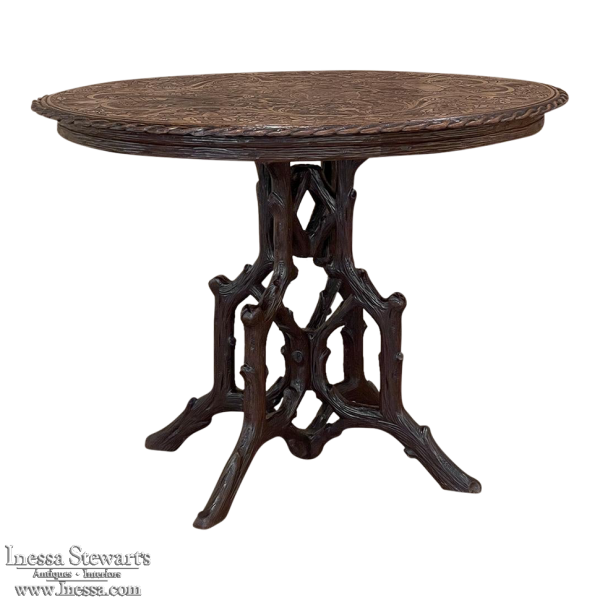Location: Dallas
19th Century Center Table by Horrix is yet another example of the superlative craftsmanship exhibited by the storied maker during the period. Set upon an unusual base carved to mimic natural tree branches, it features a subtle apron carved all around with the same naturalistic branch effect. The legs intertwine and interconnect in a natural pattern, yet are engineered for superb strength and stability. In a trademark feature, the table top itself is carved with a stunning pattern that mixes neoclassical, baroque and naturalistic forms all carved in incredible bas relief. One can see Florentine crests, Romanesque urns, ivy, sunflowers and more in a mesmerizing display of the wood sculptor's art. Sculpted from fine walnut to last for centuries! An almost exact duplicate of this example has been displayed in the Municipal Museum of The Hague.
Circa 1880s
Measures 29H x 39W x 31D
In the mid-19th century, the brothers Matthew Sr. (1815-1889) and Willem Horrix Sr. (1816-1881) continued in their family's business passed along from their father Pieter Paulus (1767 to 1840). The company was founded in 1790/91 by Mathijs Horrix (1735-1809). Eventually, Matthew & Willem's own sons Matthew Jr. (1845-1923) and Willem Jr. (1848-1902) would continue in the family tradition.
These Dutch cabinetmakers were established in The Hague, and gained fame during the so-called "eclectic period" during the 19th century. Their work was inspired by older styles of furniture, but with fashionable features that was then considered "new".
The company also made rustic style furniture that was very popular in the Northern Countries and England. These unusual objects entered the interiors of upper class houses especially popular in Biedermeyer styles in Germany, and Black Forest styles in Switzerland.
Horrix enjoyed highly acclaimed success and thanks to their good reputation, they were asked in 1883 to built the royal throne of William III of the Netherlands.




































